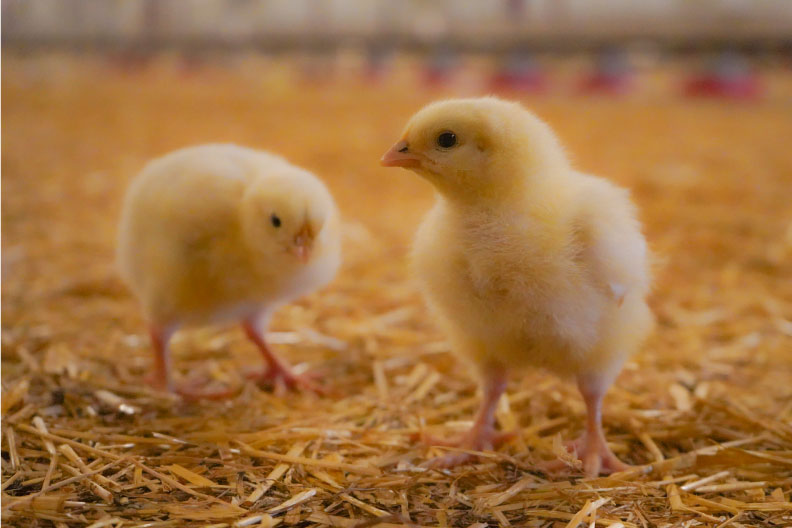By Dr. Jessalyn Walkey, DVM
Veterinarian,
Joyce Veterinary Service
In 2020’s top broiler disease charts, Colisepticemia was followed by Reovirus challenges. Reovirus is a virus that is best understood and documented for viral arthritis. Most often it presents as lameness, with birds having splayed legs and swollen hocks. In addition, over the course of 2020 we observed significant impact on growth and performance in flocks challenged with Reovirus. Unfortunately, it is considered a hardy virus that is difficult to remove from the barn environment.
Finally, Coccidiosis deserves an honourable mention for continuing to climb in rank year to year in the top 10 broiler disease charts. Coccidia are tricky parasites that can build up in a flock or barn over time without drawing much attention, eventually putting enough pressure on the flock to affect performance, or even lead to devastating mortality figures. Coccidiosis drives our industry to rotate and shuttle feed medication programs and monitor the minute details of cocci vaccine cycling in order to stay one step ahead for our birds.
In 2021 we continue to see these diseases trending in the top charts. In the winter months our chicken broilers have encountered more IBV (Infectious Bronchitis Virus) challenges as well. IBV is an acute, highly contagious viral disease, caused by an avian gammacoronavirus that has no known human health significance. It thrives in the cold weather months, and infections are commonly found across flocks at this time. Fortunately, this virus is considered labile and is easily destroyed. Now more than ever, we have a new-found appreciation of the tools available in poultry medicine for diagnosing and preventing viral diseases such as IBV.
Each year our practice documents increasing disease pressure in Ontario poultry, with new variations and even new diseases entering the top charts. In our opinion, there are many variables that contribute to these trends, such as increasing drug resistance, limitations of the preventative medicine toolbox, production programs shifting towards RWA (raised without antibiotics), climatic variations, emerging immunosuppressive diseases, and increasing demands on bird performance, to name a few. Prioritizing the gut health and overall immune status of birds will be critical in the years to come. We see producers putting an impressive amount of effort into creating overall health programs and focusing on disease prevention, early detection and rapid intervention. As a veterinarian, it is a privilege to be part of a team approach to supporting the health, welfare, and performance of Ontario flocks.
This article was written for the Spring 2021 Poultry Grist. To read the whole Poultry Grist, click the button below.

